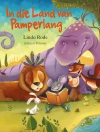In ‘Where Animals Talk: West African Folk Lore Tales, ‘ Robert Hamill Nassau presents a compelling collection of folklore that intricately weaves together the vibrant cultural tapestry of West Africa. The book showcases a plethora of tales that feature anthropomorphic animals, each brimming with moral lessons and cultural insights. Nassau’s prose is marked by a lyrical quality that mirrors traditional oral storytelling, illuminating the significance of rhythm and repetition in folk narratives. By situating these stories within their sociocultural contexts, he invites readers to engage with the rich tapestry of beliefs and values that underpin West African life. Robert Hamill Nassau was an early 20th-century American missionary and ethnographer deeply invested in the study of African cultures. His experiences in the region provided him with a unique lens to observe and document the rich traditions of storytelling in West African societies. Nassau’s extensive fieldwork and genuine appreciation for indigenous narratives shaped his desire to preserve and share these stories, ensuring they resonate with broader audiences while honoring their origins. This captivating collection is a testament to the power of storytelling as a means of cultural preservation and education. I highly recommend ‘Where Animals Talk’ to anyone interested in folklore, anthropology, or African culture. Through Nassau’s engaging tales, readers will not only be entertained but will also gain invaluable insights into the moral and ethical frameworks that have guided West African communities for generations.
Giới thiệu về tác giả
Robert Hamill Nassau (1835–1921) was an American missionary and ethnographer, whose experiences living among the peoples of West Africa during the late 19th and early 20th centuries informed his literary work. A man immersed in the exploration of cultural anthropology, Nassau spent considerable time in Gabon and the Congo region, which served as the backdrop for much of his writings. His literary style combines anthropological observation with a narrative flair, and his works offer a window into the traditional stories and customs of the West African people he lived among. ‘Where Animals Talk: West African Folk Lore Tales’ is among Nassau’s most notable works, which encapsulates the rich storytelling tradition of West Africa, blending folklore with cultural insights. In this collection, Nassau gives voice to a variety of talking animals, a common motif in West African tales, thus preserving stories that carry deep social and moral relevance. This compilation is not only significant literature but acts as a valuable repository for the folklore and oral traditions that may otherwise have been lost. Nassau’s approach respectfully bridges a gap between the academic and the lay reader, providing an accessible yet scholarly look into the heart of West African culture.












